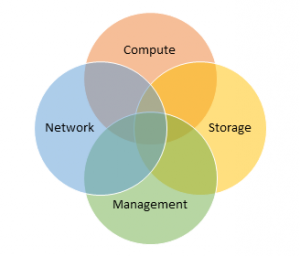First off, congrats to SimpliVity and other vendors for being included on Gartner’s inaugural Converged Infrastructure (no?) Integrated Systems Magic Quadrant (MQ)! The report not only further validates this direction for infrastructure and the importance of convergence, but also highlights the breadth of scope within this space.
Reading over the report, they used a very broad definition for Integrated Systems (read more about that at Ron Singler’s blog here), which in turn lead to them not using the term ‘converged infrastructure’. The graphic depicts Gartner’s basic qualification for inclusion in the Integrated Systems category:

This resulted in the inclusion of everything from broad workload systems (VCE, SimpliVity, etc.) to workload specific systems like Oracle Exadata and Teradata. Equally interesting, however, was the exclusion of Pivot3, Scale, UCS, VSAN, Maxta, Atlantis ILIO, EMC ScaleIO, etc.
If you look at Gartner’s Inclusion and Exclusion Criteria section (p.s. you can download the report here), you will see that they specifically excluded software-only solutions and most ‘Server SANs’ which require customer based installations and layering and only included systems that fully integrated storage (which is why no UCS without Netapp). But just because you fall into Gartner’s definition does not mean you make it into the report (e.g. Pivot3, Scale). What does this mean for vendors in the current report that will go to a software based model in the future? Or those that may OEM their software only solution to hardware vendors? Not sure, but Gartner can certainly change their criteria at their choosing.
It’s a fascinating space with explosive growth that leads to the necessity of including vendors both new and old. Note that SimpliVity had only been GA for 5 months when the data for this report was gathered. I can’t think of such a young company being this far in the Visionary quadrant, save perhaps Amazon Web Services, and even then, they had a running start (more on that over at Gabe Chapman’s blog).
What does this mean for SimpliVity? We’re certainly not taking a ‘we’re just glad to be here’ stance. It’s great affirmation of our trajectory and we’re just getting warmed up.
